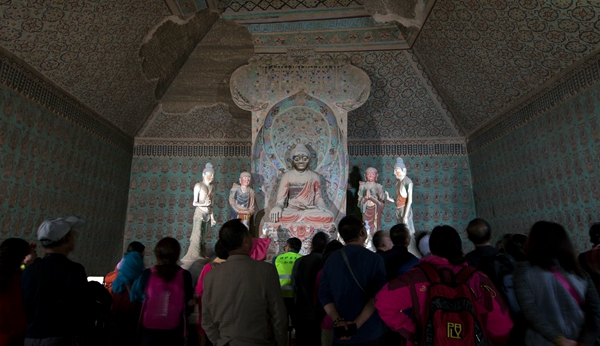 |
|
Tourists visit one of the Mogao Caves' 492 Buddhist grottoes in Dunhuang, Gansu province.[Sun Zhijun/For China Daily] |
The cave artifacts depict artistic elements beyond India, and Central and Western Asia, to encompass influences from as far away as Greece and Rome, said Zhang Yuanlin, director of the Dunhuang Academy of China, in a recent interview.
"Through these artifacts, Dunhuang reflected a cultural and artistic pluralism. In many ways, that embodies the interaction and globalization today in line with the Belt and Road Initiative," Zhang said.
Not only do the Mogao Grottoes and Angkor Wat share a great many cultural and artistic similarities, the exchanges and cooperation between Cambodia and China have been developing rapidly since the announcement of the Belt and Road Initiative.
China has donated millions of dollars to help with the restoration of Angkor Wat, shouldering more responsibility for world heritage protection.
Cambodia's Angkor Wat was listed as a World Heritage site in 1992 and China began the restoration in 2000. Now, Angkor Wat is a popular destination for Chinese tourists.